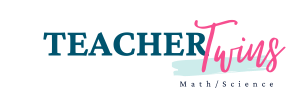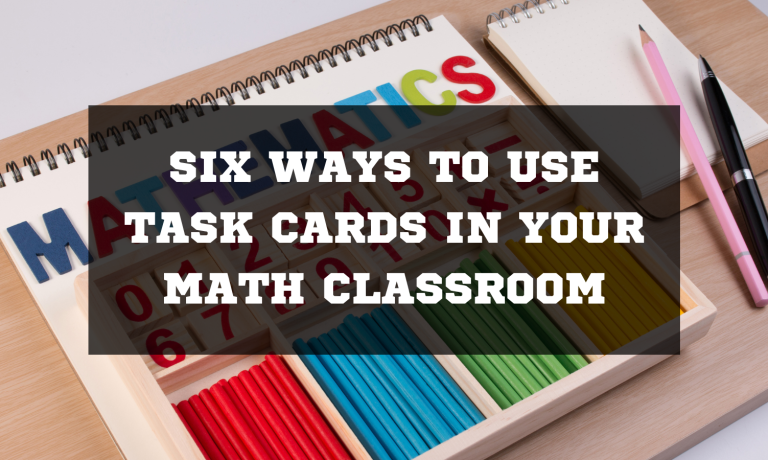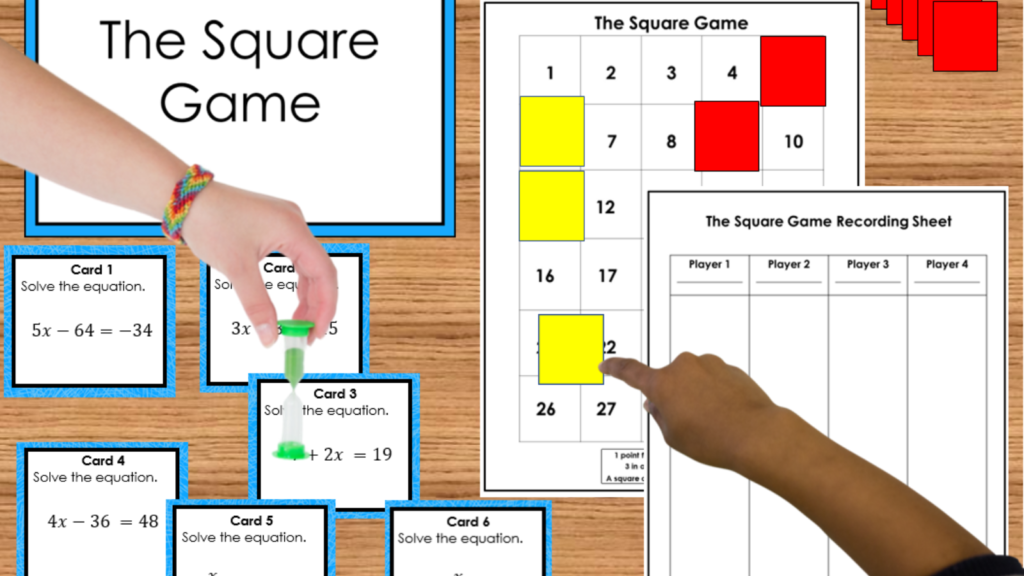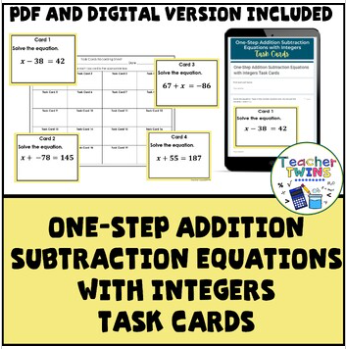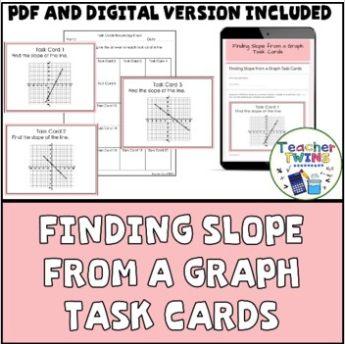Are you looking for innovative ways to engage and enhance learning in your math classroom? Look no further than task cards. Task cards are interactive and versatile tools that can revolutionize the way students learn and practice math concepts. In this article, we will explore six ways to unleash the power of task cards in your classroom.
Benefits of Using Task Cards in Math Instruction
Task cards provide endless opportunities for students to deepen their understanding of math concepts and apply their knowledge. Whether you’re teaching multiplication, fractions, geometry, or algebra, task cards can be customized to target specific skills and learning objectives.
One of the key benefits of using task cards is that they promote active learning. Unlike traditional worksheets, task cards require students to actively engage with the material. By working through a series of questions or problems on task cards, students are encouraged to think critically, make connections, and apply their knowledge in different contexts.
Task cards also promote independent learning. By using task cards, students can work at their own pace and choose the tasks that align with their current skill level. This allows for differentiation and ensures that each student is appropriately challenged. Using task cards in math instruction also encourages collaboration and peer interaction. By working in pairs or small groups, students can discuss their thinking, share strategies, and learn from one another. This not only enhances their problem-solving skills but also fosters a sense of community in the classroom.
Task Card Activities to Engage Students in Math Learning
Task cards can be the basis for a variety of engaging games and activities that bring math learning to life. Here are a few ideas for group activities you can use task cards for.
Whole Group Games
Use task cards as questions for whole group games. Task cards can be used for almost all your favorite whole class games. Students enjoy playing games and competing against their classmates. Students can also help each other by competing in groups. Below are a couple suggestions for whole group games.
Quiz Show Style: Transform your classroom into a game show setting by dividing the class into teams and using task cards as quiz questions. Students can take turns answering questions and earning points for their team. This interactive format keeps the entire class engaged and encourages healthy competition.
Task Card Relay Race: Divide the class into teams and set up stations around the classroom or outside. Each station will have a set of task cards that students must complete before moving on to the next station. The team that finishes all the stations first wins the race. This activity encourages teamwork, time management, and quick thinking.
Using task card games in the whole class setting not only makes learning more enjoyable but also ensures that every student is actively involved. These games promote healthy competition, teamwork, and critical thinking skills, creating an engaging and dynamic classroom environment.
Board Games
Task cards are great for small group games. You can use them for your favorite board game. By adding task cards to board games, you can transform them into educational tools that promote learning and engagement. Students can compete in pairs or individually. Make sure you have a way for students to check their answers during the game. It can be as simple as giving them a calculator or an answer key.
By incorporating task cards into board games, you can create a fun and interactive learning experience for your students. These games not only reinforce academic concepts but also promote strategic thinking, problem-solving, and healthy competition.
Check out this free set of two-step equations task cards with three games. It includes a whole class game board, and two board games to use in groups or pairs.
Matching Game
Add a set of answer cards to a set of task cards and you can use them as a matching game. Have the students turn the task cards over and have them turn over the answer cards. Turn one problem card over and do the problem and find the matching answer. This type of game is great to use with topics that students need extra help with.
Using Digital Task Cards for Independent Practice and Review
Digital Task Cards
Digital task cards are an excellent tool for independent practice and review. They can be used as a formative assessment to gauge student understanding and identify areas of weakness.
Using a Google Form digital version of task cards is a quick and easy way to assess students. Creating a Google Form is easy to do. You will need a png or jpeg copy of each task card and an answer key to type in the correct answer. Check out the article Creating Digital Task Cards for help creating Google Forms.
Students can also be given digital task cards for independent practice at home or in class. Put a copy of the task cards in your learning management system (Google Classroom, Canvas, etc) for students to use. You can give the students a recording sheet to put their answers on if you would like them to show their work.
Digital Task cards are also good to use for review purposes. At the end of a unit or before a test, provide students with a digital set of task cards that cover the key concepts they have learned. Make sure the answers are included so they have a way to check themselves. This allows students to review and reinforce their understanding in a more engaging and interactive way than traditional worksheets or textbooks.
Click below to check out our task cards in our Teacher Pay Teachers Teacher Twins Store.
Differentiating Instruction with Task Cards in the Math Classroom
One of the great advantages of task cards is their ability to support differentiated instruction. By providing students with a range of task cards that target different skills and levels of difficulty, you can meet the diverse needs of your students.
Stations or Centers
Stations or centers are a popular teaching strategy that allows students to rotate between different learning activities. Task cards can be a valuable addition to stations, as they provide structured and engaging tasks for students to complete. Here’s how you can use task cards in stations:
Skill Stations: Set up stations around the room with different task cards at each one. Assign students stations to go to based on the math skills they need to review. If students have mastered the skills you are working on, have some stations with challenge or enrichment task cards.
Math Problem Solving Station: Create a math problem-solving station with task cards that present different math problems or puzzles. Students can choose a task card and work on solving the problem independently or with a partner. This activity promotes critical thinking, problem-solving, and math skills.
Early Finishers
Every classroom has students who finish their work early and are in need of additional activities to keep them engaged. Task cards can be a valuable resource for early finishers, providing them with meaningful and challenging tasks to work on independently. Here’s how you can use task cards for early finishers:
Enrichment Task Cards: Create task cards that offer enrichment activities or extensions of the lesson for early finishers to explore. These activities can be more challenging or open-ended, allowing students to delve deeper into the subject matter. This activity promotes critical thinking, creativity, and independent learning.
Review Task Cards: Design task cards that review previously learned concepts or skills. Early finishers can use these task cards to reinforce their understanding and practice their knowledge. This activity promotes retention, self-assessment, and skill consolidation.
By providing early finishers with task cards, you can ensure that they are continuously challenged and engaged in meaningful activities. These tasks promote critical thinking, creativity, and independent learning, fostering a love for learning beyond the regular curriculum.
Conclusion
In conclusion, task cards are a powerful tool for boosting student engagement and transforming boredom into excitement in the classroom. Whether used in the whole class setting, for group work, incorporated into board games, used in stations, or for early finishers, task cards offer a hands-on and interactive approach to learning that fosters active involvement and enhances comprehension. By tapping into your students’ natural curiosity and incorporating task cards into your lessons, you can create an engaging learning environment that promotes critical thinking, problem-solving, collaboration, and overall student success. Say goodbye to disinterested students and hello to an enthusiastic classroom atmosphere with the help of task cards!
